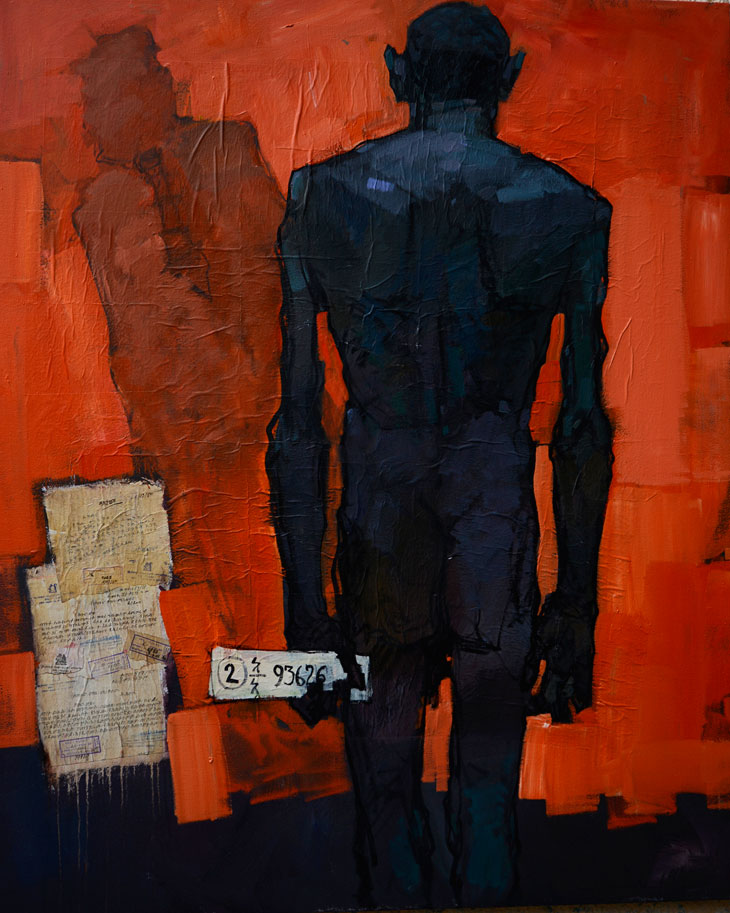
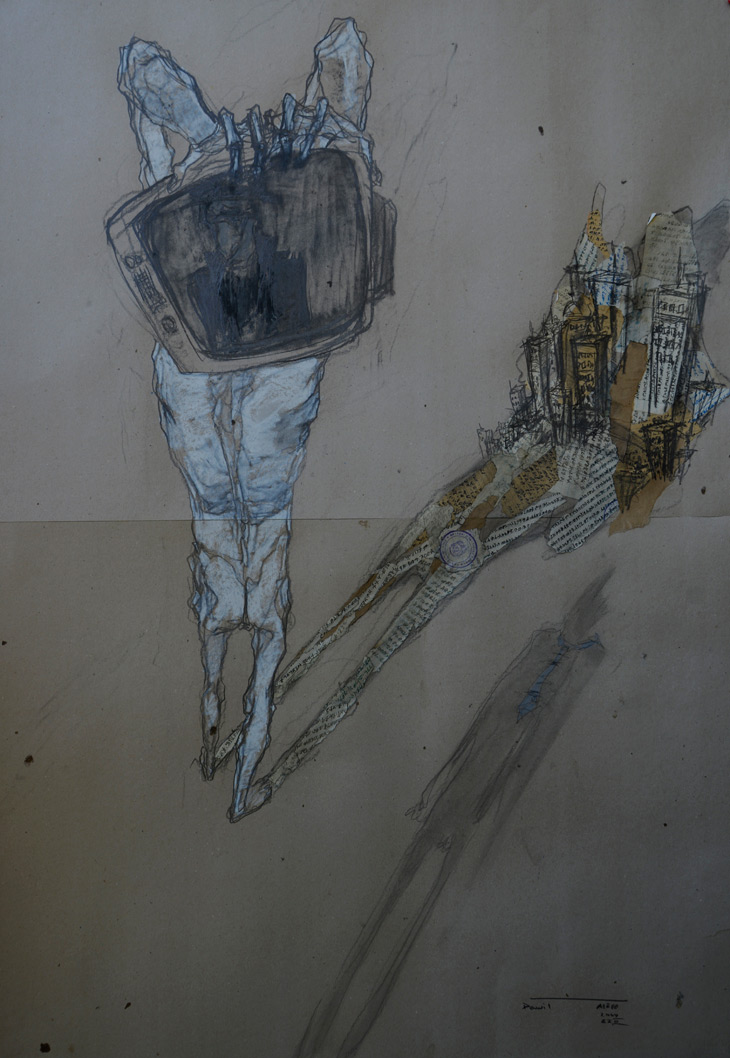
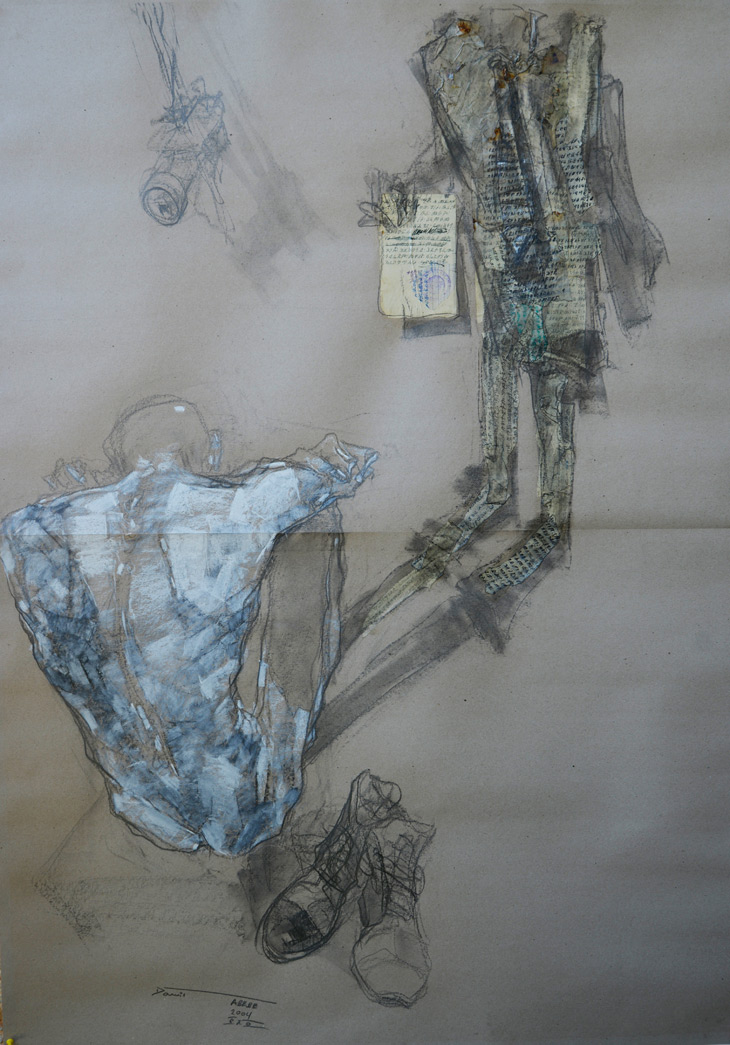
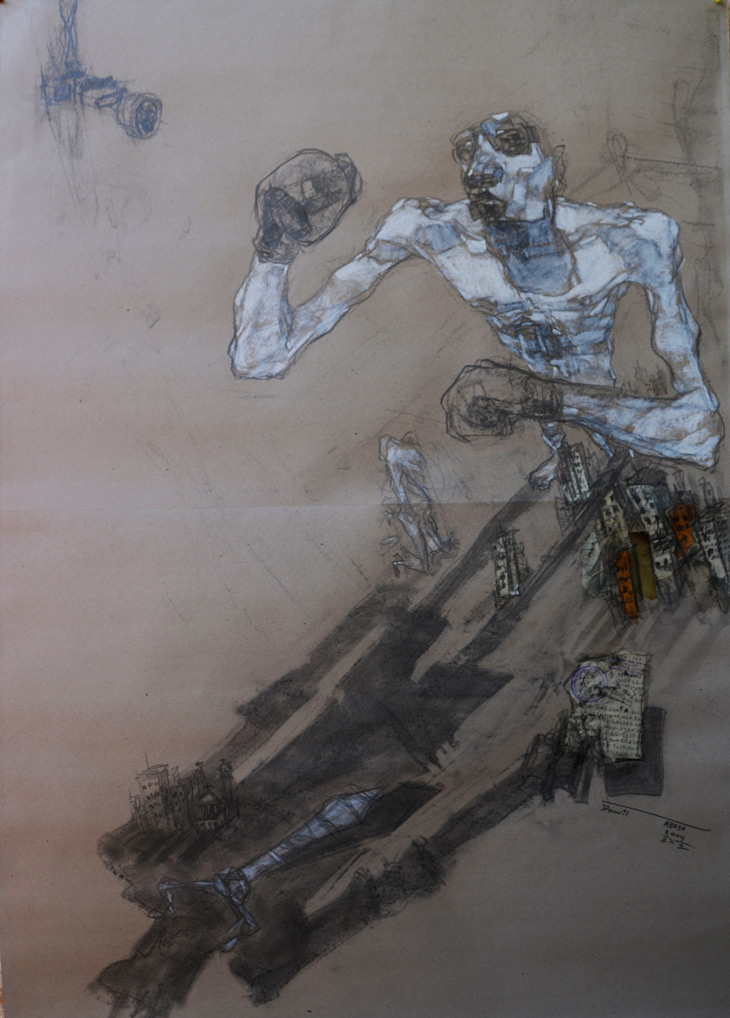
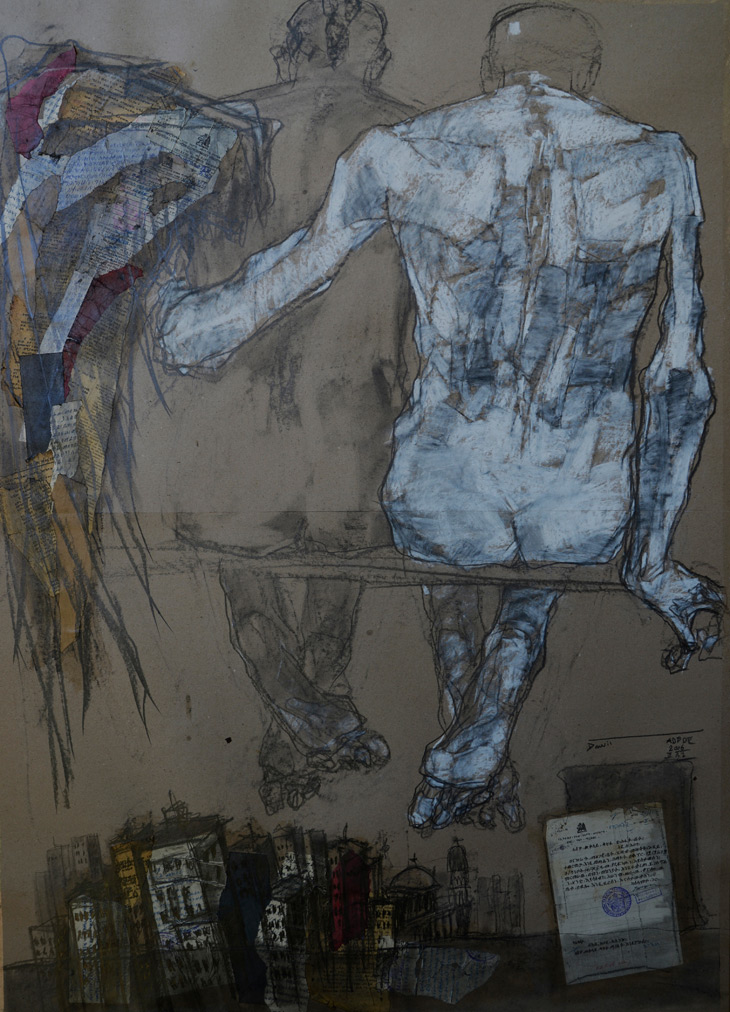
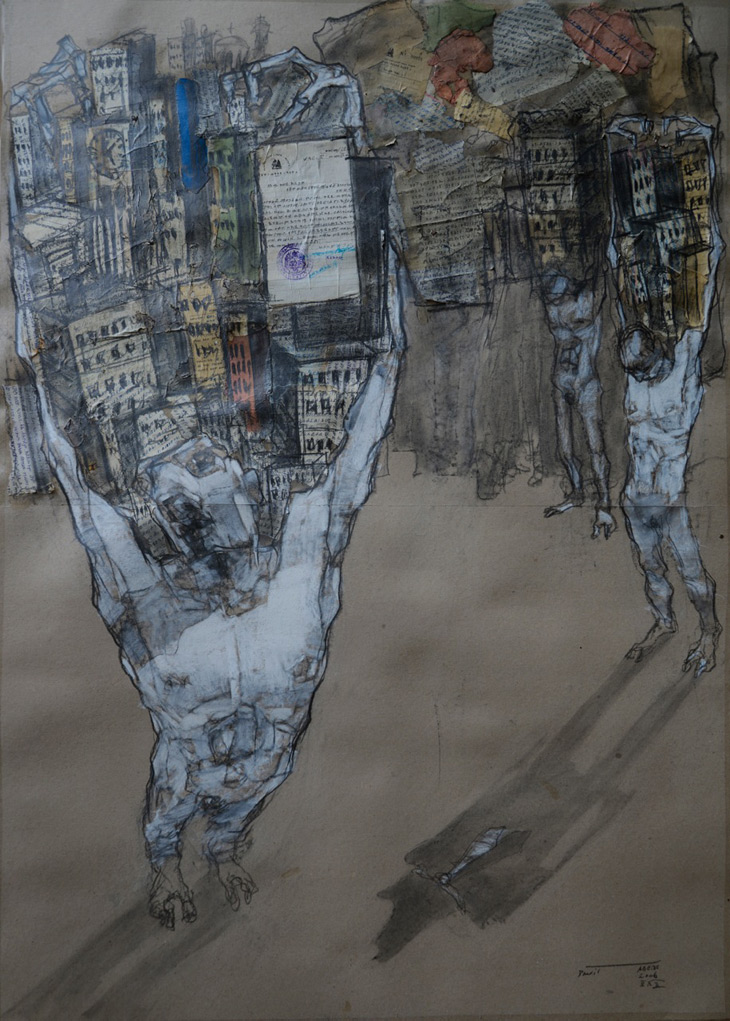
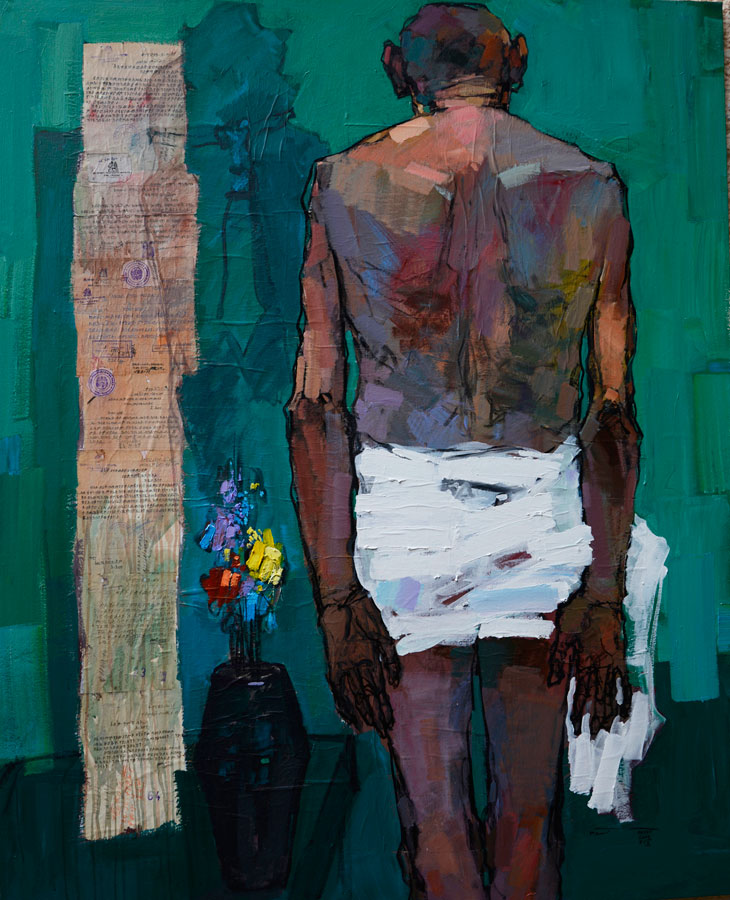
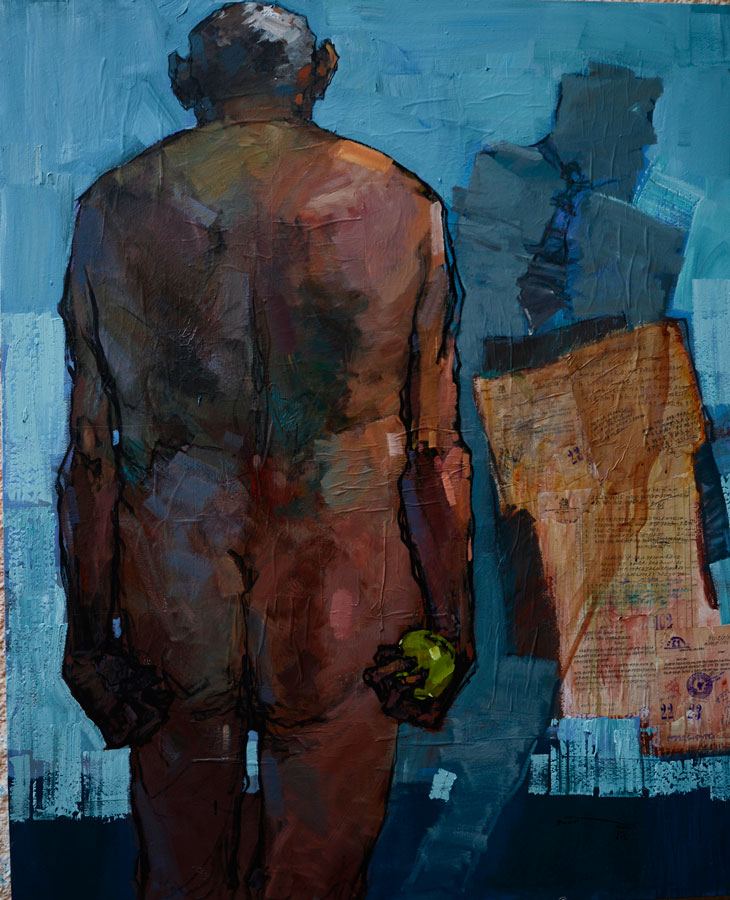
Dawit Abebe
© Osei Bonsu, 2014
Wide chested, with compressed rounded heads, centred upon long spinal cords, Abebe’s beings defy anatomical perfection (Background series, 2014). Navigating a labyrinth-like virtual world, these subjects become surrounded by travelling signs and symbols, those fragmented bits of shredded scroll-like paper, official documents, patches of urban landscapes and roaming camera devices allude to a political underbelly. The fragility of Abebe’s figurative yet unfamiliar subject reflects the temporal conditions of human experience rushed by inevitable transformation.
In Dawit Abebe’s observations of human kind, strange figures turn away from the world. As silent witnesses, their often-gaunt affliction and melancholic surroundings suggest they are bodies in exile, or the subjects of an unknown trauma. Together, they command the foreground of Abebe’s narrative drawings, in which proportions become distorted through surreal re-imaginings of a parallel reality. Their limbering forms can be seen hurling shadows along vertical lines, as their bodies dwarf cities in their wake. Devoid of individual description, these hybrid ‘beings’ become stationed in permanent view, eclipsing whatever there is to be witnessed ahead of them: the fate of mankind perhaps.
In Ethiopia, the project of modernity is one characterised by the collision between tradition and cross-cultural associations. Abebe’s schematic compositions recall the scales of Ethiopian Jazz, as much as they do an impressionistic rendering of the European nude. Rooted in an urban locality, his practice is increasingly concerned with questions of modern surveillance and human interaction in the face of new technologies (Project X, 2014). While rapid development of technology is galvanising change in cosmopolitan Africa, it has brought about the alienation of traditional values within certain communal groups and societies. The artist gives form to a vision of human experience that is uprooted from an everyday reality; his occupied subjects seem to be caught within the revolutionary current of Ethiopia’s past, one marked by the inescapable shadows of landless citizens.
Abebe’s poetic inflections lead him into a study of human behaviour, through which the body becomes a vehicle for the navigation of modern surroundings.
By way of examining the transformations of interaction between bodies and structures, technology and forms, there emerges a unique conception in the public sphere. Abebe’s beings exist between borders, and having done away with the bureaucracy and confinement of everyday life, they are given an imagined autonomy born of a doubling of concurrent states of being both anywhere and nowhere.







